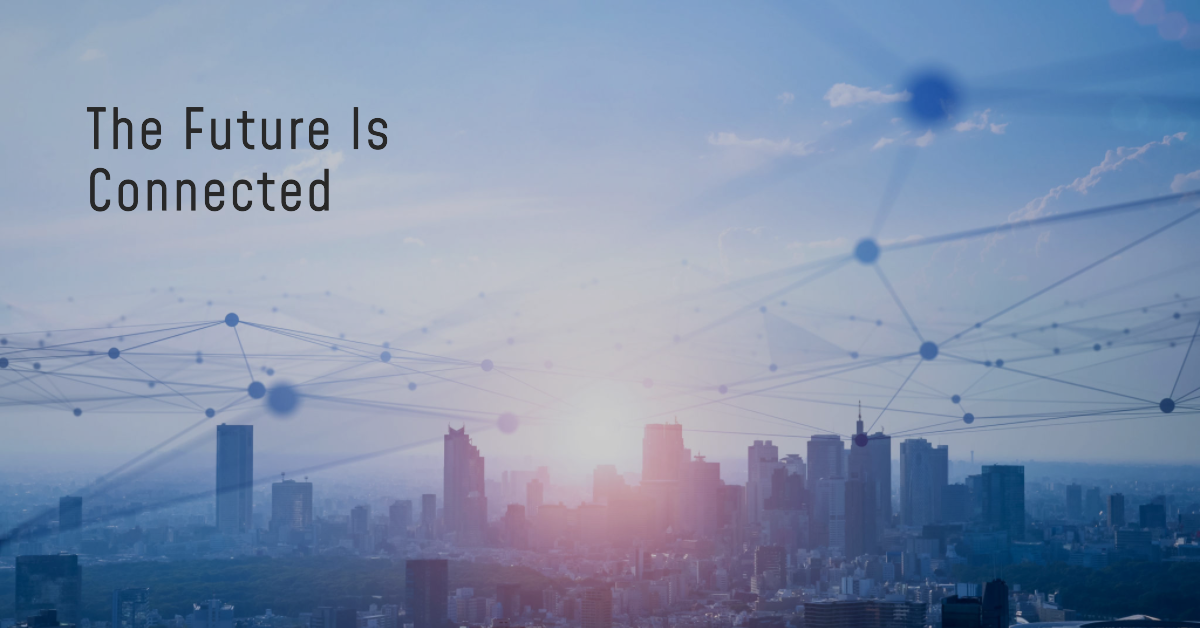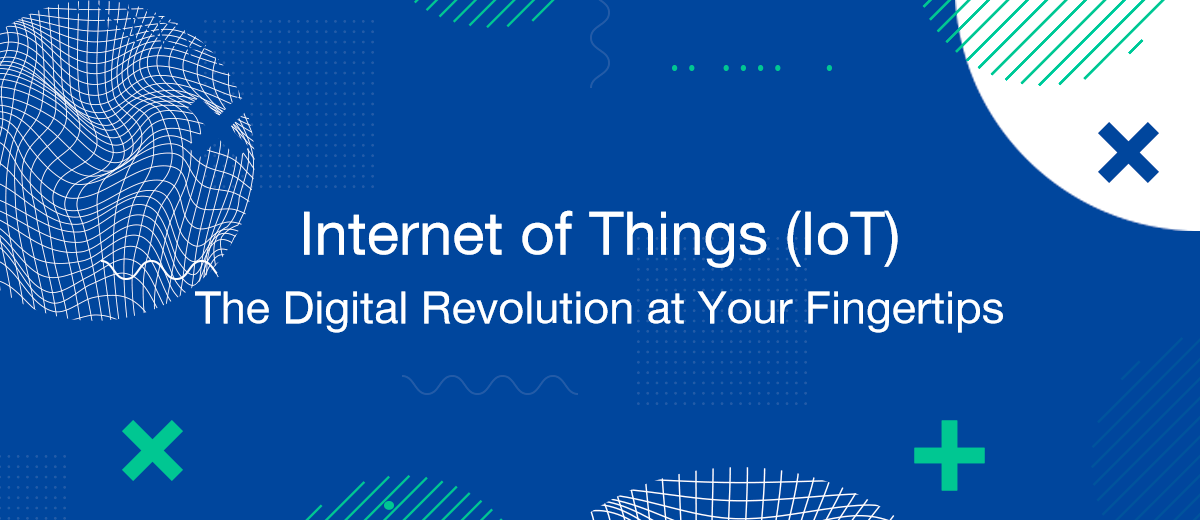Immersed in the whirlwind of a digital revolution, we've swiftly transitioned from a world where devices merely responded to our commands, to a reality where our devices interact, learn, and adapt. This new realm, guided by the Internet of Things (IoT), opens a world of possibilities. Everyday objects are now embedded with sensors, software, and other technologies, seamlessly connected to communicate and exchange data. This transformation has touched everything from our living rooms to industries at large. Join us as we delve into the birth, applications, technology, impacts, and future of the IoT.
The Birth of the IoT Era
In retrospect, the concept of the "Internet of Things" (IoT) was a seemingly far-off prediction. Today, it stands as a testament to human ingenuity and technological advancement. The birth of the IoT era marked a significant turning point in our relationship with technology.
- The Definition: So, what is the Internet of Things? At its simplest, the Internet of Things refers to the vast network of physical devices connected to the internet, each collecting and sharing data. This concept extends internet connectivity beyond traditional devices like desktops and laptops to a wide array of objects, vehicles, and appliances.
- The Emergence: The idea of networked devices had been around for some time, but it was the advent of wireless internet and advanced sensors that truly ignited the birth of the IoT era. These innovations allowed for everyday items to become 'smart', effectively laying the groundwork for the Internet of Things.
- The Platforms: Over time, several Internet of Things platforms have emerged. These platforms, serving as the backbone of the IoT, allow for the management and integration of IoT devices, facilitating the collection, processing, storage, and analysis of data.
- The First Applications: The early application of Internet of Things primarily occurred in industries such as logistics for real-time tracking of goods. The usage has since expanded and now permeates every sector of society, transforming our homes, cities, and workplaces into interconnected hubs of data.
- Smart Cities and IoT: Internet of Things for smart cities represents one of the most significant areas of growth in the IoT era. By integrating technologies like IoT into city infrastructure, we are able to create 'smart cities' that optimize resource consumption, streamline urban services, and improve the quality of life for residents.
Indeed, the birth of the IoT era heralds an exciting epoch of unprecedented connectivity, where the boundary between the physical and digital world blurs, leading to an age of transformation, all at our fingertips. IoT startups are actively developing, demonstrating the high potential of this technology.
The Expanding Web: Understanding IoT Applications

In the era of smart technology, the Internet of Things (IoT) has been steadily changing the landscape, driving innovation across a myriad of sectors. From everyday personal use to complex industrial systems, IoT applications are redefining the scope and pace of progress.
- Personal and Home Applications: The term 'smart home' has become increasingly common, thanks to IoT devices. These include everything from smart thermostats, lighting systems, refrigerators, and security systems, to devices like Amazon's Alexa or Google's Home, which provide an integrated and intuitive control center for the smart home.
- Healthcare: IoT has revolutionized the healthcare sector with the advent of wearable devices for health monitoring and telemedicine facilities, offering convenience and real-time access to healthcare services. Moreover, custom healthcare software development plays a pivotal role in enhancing the functionality of these IoT devices.
- Industrial Automation: The industrial sector has significantly benefited from IoT applications. Industrial IoT (IIoT) is deployed for predictive maintenance, enhanced safety protocols, and process optimization, improving efficiency and reducing costs.
- Smart Cities: In the urban landscape, the concept of 'smart cities' leverages IoT to manage public resources more effectively. From traffic management and waste disposal to energy usage and public safety, IoT applications play a crucial role in making urban environments more sustainable and livable.
- Agriculture: IoT advancements in agriculture include precision farming, smart greenhouses, and automated irrigation systems, helping improve crop yields and resource management.
- Retail: In the retail sector, IoT is used to enhance customer experience through personalized advertising, supply chain management, and inventory management.
These applications underscore the expansive web of IoT and how it's interwoven into various sectors, optimizing processes, enhancing efficiency, and introducing a new level of automation and convenience. With IoT devices becoming increasingly prevalent, we can only anticipate a future further entwined with this powerful technology.
Behind the Screens: How IoT Works
Understanding the mechanics of IoT is vital to appreciating its transformative potential. The Internet of Things, at its most basic level, consists of devices that collect and share data via the internet. These aren't just traditional computers or smartphones; they're everyday objects, like refrigerators, watches, and even light bulbs, enhanced with modern technology to perform advanced functions.
- Sensors and Actuators: The heart of every IoT device is its sensors and actuators. Sensors collect data from the environment, such as temperature, light, motion, and much more. Actuators, on the other hand, perform actions based on the data received, like turning a device on or off.
- Connectivity: Once data is collected, IoT devices use various connectivity options, such as Wi-Fi, Bluetooth, or cellular networks, to send the information to a gateway or directly to the cloud.
- Data Processing: After data is transmitted, it's processed either locally or in the cloud. This processing can range from simple data analysis to complex machine learning algorithms. Depending on the processed data, an appropriate response is determined.
- User Interface: The results are then made available to the user via an interface, such as a mobile or web application. The user can review data, manage devices, and even automate tasks. In many instances, the system can make decisions and act autonomously based on pre-set rules.
- Action: Once a decision is made, the system sends instructions back to the IoT device to perform the necessary action. For instance, if a smart thermostat detects that the room temperature is too high, it may send a signal to the air conditioner to lower the temperature.
This behind-the-scenes look at how the Internet of Things operates provides an insight into the interplay of devices, data, and decisions that drive this innovative technology. This understanding forms the foundation for envisioning future advancements and harnessing the full potential of IoT. Additionally, with the guidance of IoT consulting services, businesses can maximize the potential of the Internet of Things (IoT) by understanding its operations and leveraging its capabilities for transformative outcomes.
IoT's Impacts on Society and Economy
The Internet of Things has made a profound impact on both society and the economy, establishing an interconnected digital world that has changed the way we live and do business. Here's a deeper look at these significant shifts:
- Enhanced Productivity: IoT devices automate repetitive tasks, leading to significant productivity gains in various sectors. For instance, smart manufacturing systems can monitor and adjust production lines in real time, minimizing downtime and optimizing output.
- Economic Growth: The extensive application of IoT has fuelled economic growth. According to predictions, the IoT could contribute trillions to global GDP in the next decade, creating new job opportunities and revenue streams.
- Improved Quality of Life: On the societal level, IoT devices like wearable fitness trackers, smart home appliances, and personal assistants have improved quality of life by making day-to-day tasks more convenient.
- Smart Cities: The Internet of Things for smart cities has transformed urban living. From smart traffic management systems that reduce congestion, to intelligent waste management that improves sanitation, IoT applications are making cities more efficient and sustainable.
- Environmental Impact: IoT has a significant role in environmental conservation. IoT sensors can monitor pollution levels, manage energy use in buildings, and even track endangered wildlife, contributing to a more sustainable future.
- Healthcare Advancements: In healthcare, IoT devices have revolutionized patient care and management. From remote patient monitoring systems to smart drug delivery devices, IoT has enhanced patient outcomes and improved healthcare delivery.
The widespread benefits of IoT have already begun to shape a new socio-economic landscape. As the technology matures and expands, these impacts are only expected to grow, making IoT an integral part of our future.
Peering into the Future: IoT Trends and Predictions
Looking ahead, the Internet of Things is poised for significant advancements, shaped by technological evolution and driven by an increasingly digital world. Here are some of the most compelling trends and predictions in IoT:
- Expansion of IoT Devices: The number of IoT devices is expected to grow exponentially, surpassing the world population. Everything from home appliances to industrial machinery will become smarter and more interconnected, further enhancing the application of the Internet of Things.
- Edge Computing: With the surge in IoT devices, edge computing will become more important. This technology allows data processing closer to the device, reducing latency, and enhancing real-time decision making - critical for applications like self-driving cars or real-time health monitoring.
- IoT and Artificial Intelligence: IoT and AI are set to work together more closely. IoT provides vast amounts of data, which AI can analyze for insights, predictive analysis, and automation. This symbiosis will drive advancements in sectors like healthcare, manufacturing, and retail.
- IoT Security: As IoT expands, so does the need for robust security measures. Expect to see advancements in IoT security solutions to protect against cyber threats, data breaches, and to ensure user privacy.
- 5G and IoT: The rollout of 5G networks will significantly impact IoT. With faster speeds and lower latency, 5G will enable more reliable and efficient IoT applications, from autonomous vehicles to smart cities.
- Sustainability: With climate change becoming a critical global concern, IoT will play a crucial role in promoting sustainability. Expect to see increased use of IoT for energy efficiency, waste reduction, and tracking environmental conditions.
As the IoT continues to evolve and permeate various aspects of life and business, it is clear that the only constant in its journey is change. As we stand on the brink of an even more interconnected world, these trends hint at the immense possibilities that the future of IoT holds.
You probably know that the speed of leads processing directly affects the conversion and customer loyalty. Do you want to receive real-time information about new orders from Facebook and Instagram in order to respond to them as quickly as possible? Use the SaveMyLeads online connector. Link your Facebook advertising account to the messenger so that employees receive notifications about new leads. Create an integration with the SMS service so that a welcome message is sent to each new customer. Adding leads to a CRM system, contacts to mailing lists, tasks to project management programs – all this and much more can be automated using SaveMyLeads. Set up integrations, get rid of routine operations and focus on the really important tasks.
